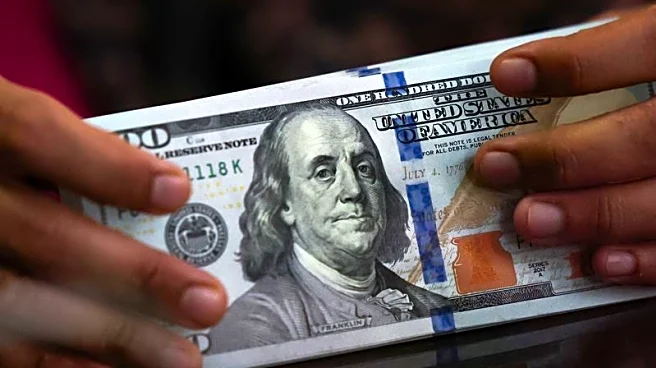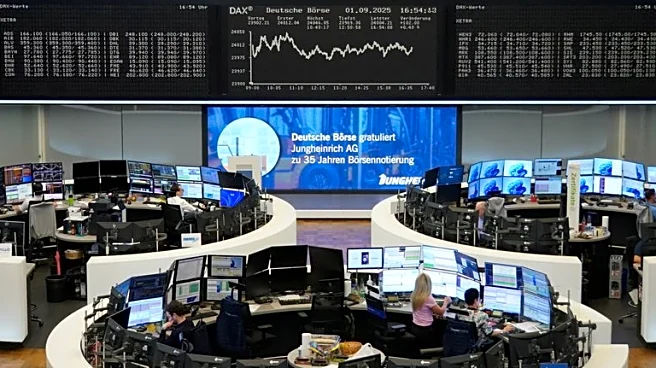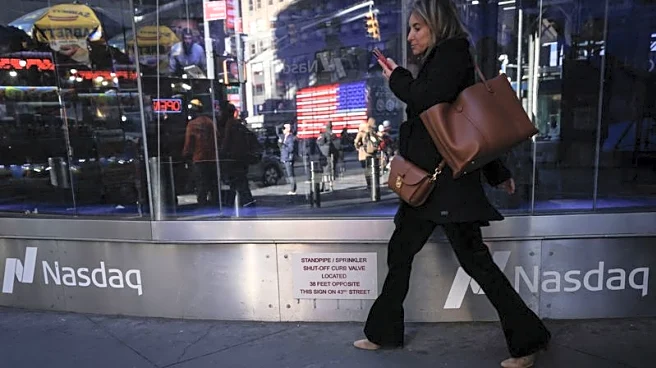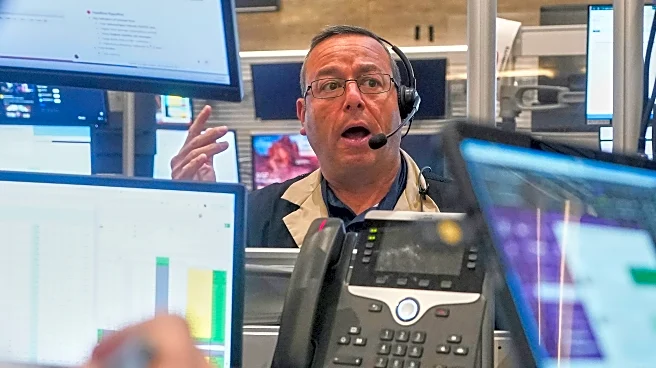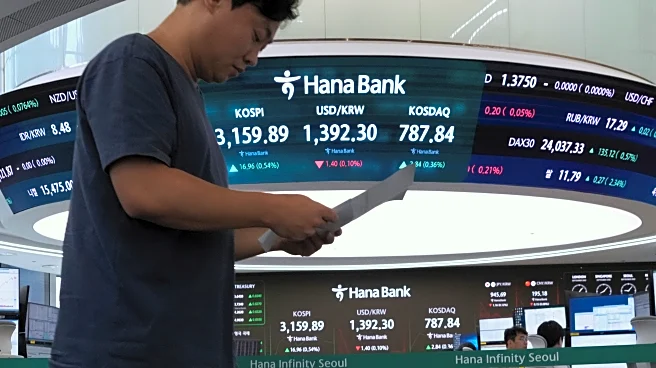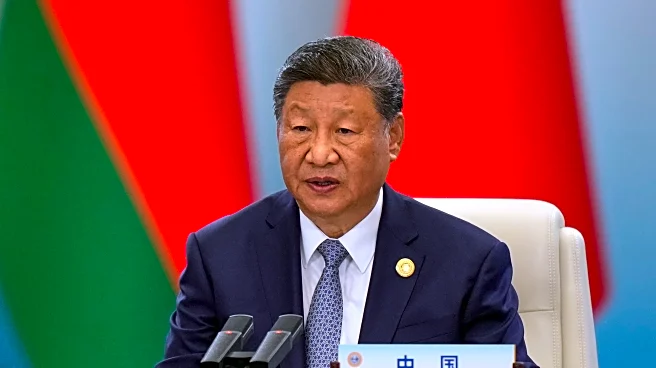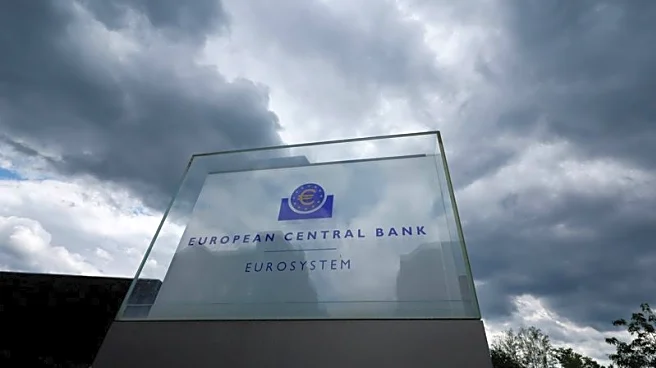By Mike Dolan
LONDON (Reuters) - What matters in U.S. and global markets today
By Mike Dolan, Editor-At-Large, Finance and Markets
It may just be the 'back to school' trade, but September is bringing a sudden burst of financial market volatility as Americans return from Labor Day, with the dollar, long-term government bond yields and record-high gold all surging on Tuesday.
Although worries abound about mounting public debt, tariffs and Federal Reserve independence, it was difficult to identify any precise
trigger for the sequence of overnight market moves - and hard to connect the dots. Rising long-term government bond yields in Britain, France and the United States may reflect debt concerns as we enter the annual budget season and higher oil prices aren’t helping things, but the simultaneous rise of gold and the dollar made less sense.
The rise in volatility has knocked back stocks worldwide.
* Europe was the epicentre of Tuesday's bond jolt, with France's 30-year government bond yields hitting their highest in over 16 years as Prime Minister François Bayrou began talks with political parties in a bid to prevent a government collapse over his budget. Britain's 30-year borrowing costs rose to their highest levels since 1998 and sterling slid more than 1% on Tuesday, with this week's reshuffle of PM Keir Starmer's economic team ahead of the Autumn budget raising questions about the position of Chancellor Rachel Reeves. With Fed independence a key focus in a big week for labor data on Wall Street, U.S. 30-year yields stalked 5% yet again and hit their highest in over a month - sending the 2-to-30-year yield curve to its highest in almost four years.
* With China's gathering of its Russian, North Korean and Indian allies this week as a backdrop, gold soared to record highs on a heady mix of long-term inflation and government debt concerns - bursting through April's prior peak to top $3,500 per ounce and clocking year-to-date gains of 33%. However, the dollar - unusually in times of stress this year - also surged against the euro, sterling, yen and yuan - with U.S. payrolls eyed, real-time U.S. GDP estimates running at 3.5% for the third quarter and August manufacturing surveys due later.
* Elsewhere, global stocks were down generally - with Wall Street futures down about 0.5% after a rough session last Friday saw a 1%-plus shakeout in the tech sector. There was also a wave of uncertainty over fresh legal challenges to President Trump's 'reciprocal' tariffs - a ruling that arrived after Friday's closing bell. The tech wobble hit Japanese and South Korean stocks on Monday, but they recovered some of that today. Aside from the government bond angst in Europe, there was a focus on Nestle's 1% share slip after the Swiss food giant ousted Chief Executive Laurent Freixe a year into his tenure.
Today's column explores the implications of the legal challenges to Trump’s 'reciprocal' tariffs and how they complicate an already messy policy picture.
Today's Market Minute
* China's President Xi Jinping convened his Russian and North Korean counterparts together for the first time on Tuesday, a show of solidarity with countries shunned by the West over their role in Europe's worst war in 80 years.
* Nestle (NESN.S) investors were pitched back into choppy waters on Tuesday after the Swiss food giant changed its CEO for the second time in a year, ousting boss Laurent Freixe over an affair he had with a subordinate.
* U.S. Treasury Secretary Scott Bessent said on Monday the Federal Reserve is and should be independent but said it had "made a lot of mistakes" and defended President Donald Trump's right to fire Fed Governor Lisa Cook over allegations of mortgage fraud.
* The complex web of Western sanctions targeting Russia’s oil and gas industry has failed to impede Moscow’s energy flows or its war effort, writes ROI energy columnist Ron Bousso, suggesting that time and overuse are blunting the force of U.S. and European financial weapons.
* Asia's imports of crude oil rebounded in August as heavyweight buyers China and India bought more crude from top exporters in the Middle East. But is this being driven by demand or price? Read the latest from ROI columnist Clyde Russell.
Chart of the day
As government budget season looms in Europe and anxiety about U.S. debt loads and central bank independence linger stateside, long-term public borrowing rates are climbing and the so-called yield curve gaps between 2-year maturities and 30-year tenors is widening to reflect much of that long-term uncertainty. French and British yield curves are now at their steepest since 2017 and the U.S. curve is at its steepest since 2021.
Today's events to watch
* U.S. August manufacturing surveys from S&P Global (9:45 AM EDT) and ISM (10:00 AM EDT)
* Chinese President Xi Jinping to meet Russian President Vladimir Putin in Beijing
* U.S. Secretary of State Marco Rubio visits Mexico
-- Want to receive the Morning Bid in your inbox every weekday morning? Sign up for the newsletter here. You can find ROI on the Reuters website, and you can follow us on LinkedIn and X.
(The opinions expressed here are those of the author, a columnist for Reuters)
(Reporting by Mike Dolan; editing by Ros Russell)
